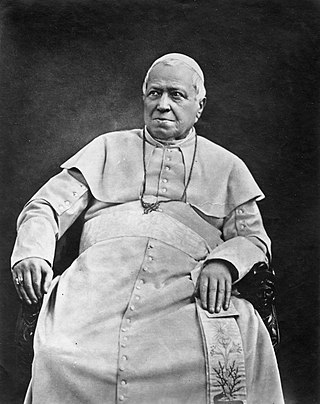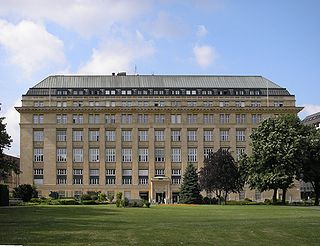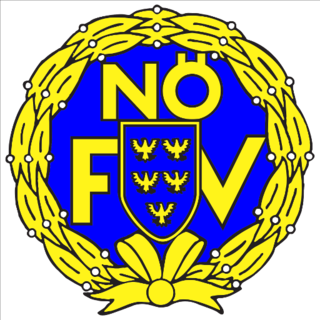
The House of Habsburg, also known as the House of Austria, was one of the most prominent and important dynasties in European history.

Pope Pius IX was head of the Catholic Church from 1846 to 1878. His reign of nearly 32 years is the longest of any pope in history. He was notable for convoking the First Vatican Council in 1868 and for permanently losing control of the Papal States in 1870 to the Kingdom of Italy. Thereafter, he refused to leave Vatican City, declaring himself a "prisoner in the Vatican".

The economy of Austria is a highly developed social market economy, with the country being one of the fourteen richest in the world in terms of GDP per capita. Until the 1980s, many of Austria's largest industry firms were nationalised. In recent years, privatisation has reduced state holdings to a level comparable to other European economies. Among OECD nations, Austria has a highly efficient and strong social security system; social expenditure stood at roughly 29.4% of GDP.

Burgenland is the easternmost and least populous state of Austria. It consists of two statutory cities and seven rural districts, with a total of 171 municipalities. It is 166 km (103 mi) long from north to south but much narrower from west to east. The region is part of the Centrope Project. The name of Burgenland was invented/coined in 1922, after its territories became part of Austria. The population of Burgenland as of 1 January 2024 is 301,951. Burgenland's capital is Eisenstadt.

Charles I was Emperor of Austria, King of Hungary, and the ruler of the other states of the Habsburg monarchy from November 1916 until the monarchy was abolished in November 1918. He was the last of the monarchs belonging to the House of Habsburg-Lorraine to rule over Austria-Hungary. The son of Archduke Otto of Austria and Princess Maria Josepha of Saxony, Charles became heir presumptive of Emperor Franz Joseph when his uncle Archduke Franz Ferdinand of Austria was assassinated in 1914. In 1911, he married Princess Zita of Bourbon-Parma.

The krone was the official currency of Austria-Hungary from 1892 until the dissolution of the empire in 1918. The subunit was one hundredth of the main unit, and was called a Heller in the Austrian and a fillér in the Hungarian part of the Empire.

The Oesterreichische Nationalbank is the Austrian member of the Eurosystem and was the monetary authority for Austria from 1923 to 1938 and from 1945 to 1998, issuing the Austrian schilling.

The Austrian Football Association is the governing body of football in Austria. It organises the football league, Austrian Bundesliga, the Austrian Cup and the Austria national football team, as well as its female equivalent. It is based in the capital, Vienna.

The Academy of Fine Arts Vienna is a public art school in Vienna, Austria.

The Wiener Sport-Club, sometimes abbreviated as WSC, was established in 1883 in Vienna, Austria and is one of the country's oldest athletics clubs. Their traditional home is in the Dornbach quarter of the city.

The Allies or the Entente was an international military coalition of countries led by France, the United Kingdom, Russia, the United States, Italy, and Japan against the Central Powers of Germany, Austria-Hungary, the Ottoman Empire, and Bulgaria in World War I (1914–1918).

The First Austrian Republic, officially the Republic of Austria, was created after the signing of the Treaty of Saint-Germain-en-Laye on 10 September 1919—the settlement after the end of World War I which ended the Habsburg rump state of Republic of German-Austria—and ended with the establishment of the Austrofascist Federal State of Austria based upon a dictatorship of Engelbert Dollfuss and the Fatherland's Front in 1934. The Republic's constitution was enacted on 1 October 1920 and amended on 7 December 1929. The republican period was increasingly marked by violent strife between those with left-wing and right-wing views, leading to the July Revolt of 1927 and the Austrian Civil War of 1934.
Fritz Schulz was a German and Austrian movie and stage actor, singer and director.

Bellamy Storer was an American lawyer and politician who served two terms as a U.S. Representative from Ohio from 1891 to 1895. He later served as a diplomat for the United States, serving as minister or ambassador to Belgium, Spain, and Austria.
The subdivisions of the Kingdom of Yugoslavia existed successively in three different forms. From 1918 to 1922, the Kingdom of Yugoslavia maintained the pre-World War I subdivisions of Yugoslavia's predecessor states. In 1922, the state was divided into 33 oblasts or provinces and, in 1929, a new system of nine banates was implemented.
Rudi Strittich was an Austrian football coach and former player.

Magnus Stifter was an Austrian stage and film actor. He appeared in 85 films between 1914 and 1941. He was born in Vienna, Austria-Hungary, and died in Vienna, Nazi Germany.
The 1922–23 Austrian First Class season was the twelfth season of top-tier football in Austria. SK Rapid Wien claim their eighth Austrian title after winning the title by four points over second place SV Amateure. On the other end of the table, Floridsdorfer AC, Wiener AC and SC Rudolfshügel were all relegated to the second tier of Austrian football.

Archduke Rainer of Austria was a member of the House of Habsburg-Lorraine, a member of the Tuscan branch of the Imperial House of Habsburg, an Archduke of Austria and Prince of Tuscany by birth. He was the eldest son Archduke Leopold Salvator of Austria, Prince of Tuscany. He served as officer in the Austrian army during World War I. At the fall of the Habsburg dynasty, he remained in Vienna and worked for a time as taxi driver. He died unmarried at the age of 34 from blood-poisoning.

The Lower Austrian Football Cup is one of nine Austrian football cup competitions for the level of the regional football associations and is organized by the Lower Austrian Football Association. Currently, it is also known as the "Admiral NÖ-Meistercup".















